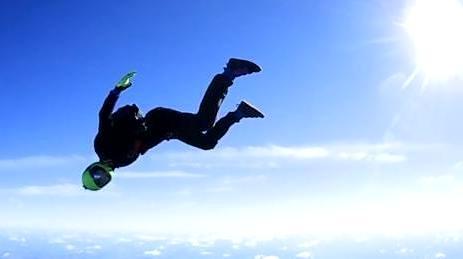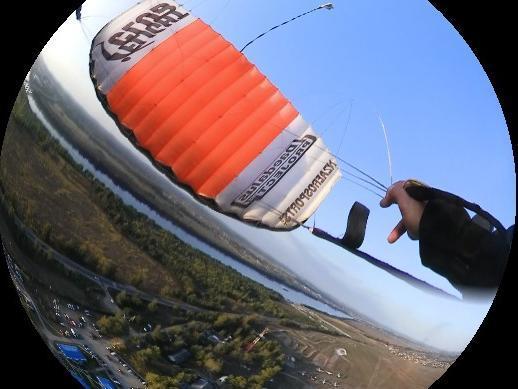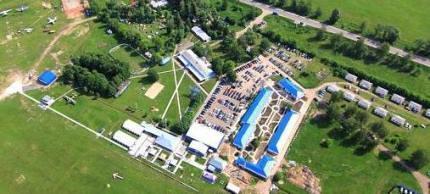
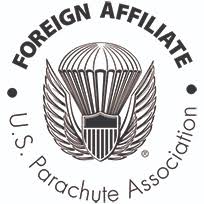
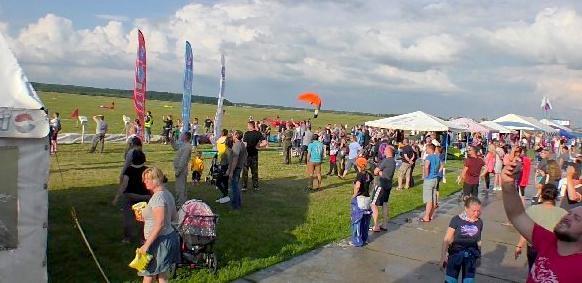
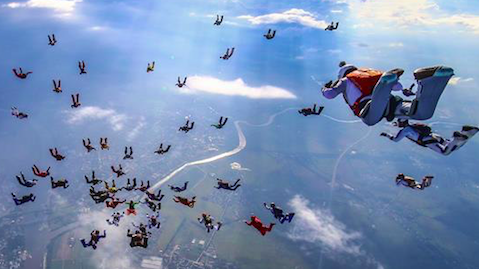
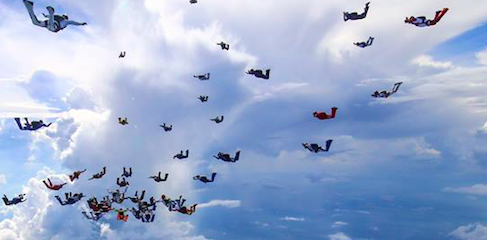
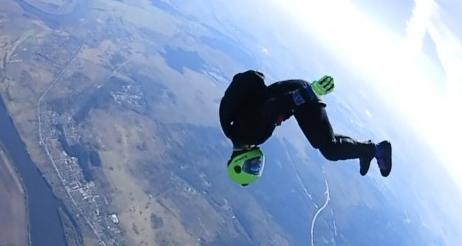
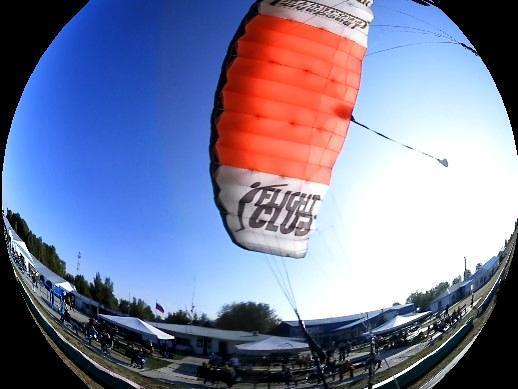
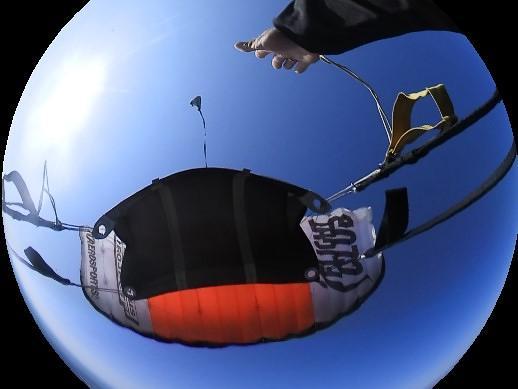
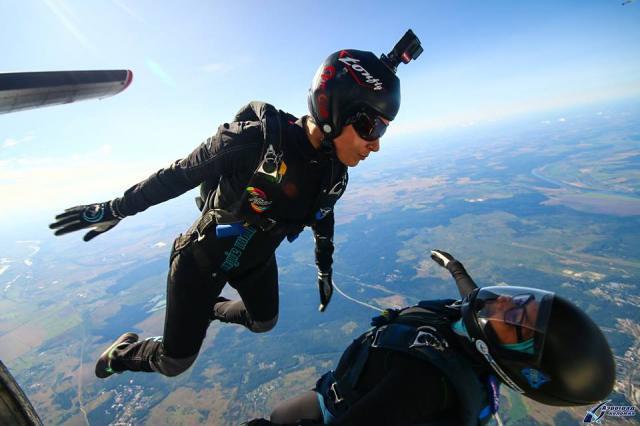
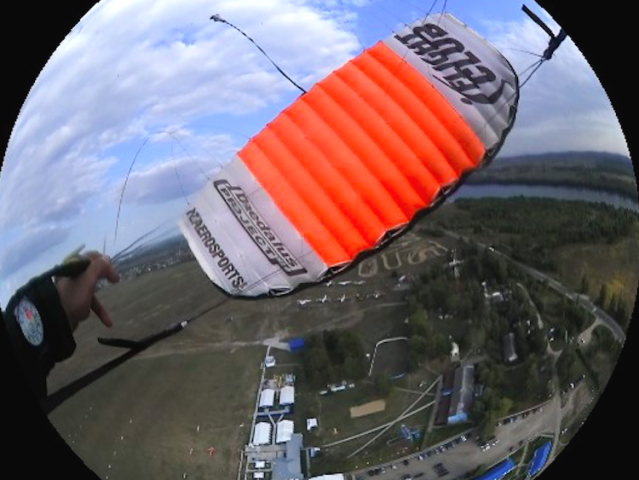
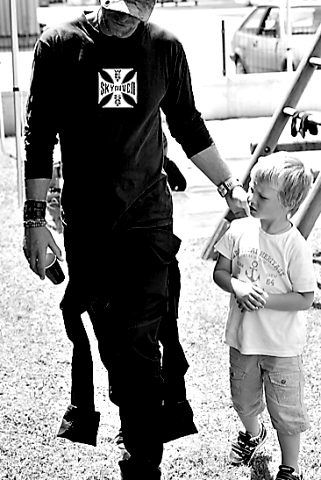
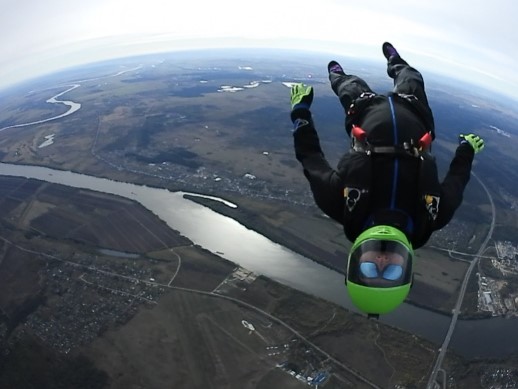
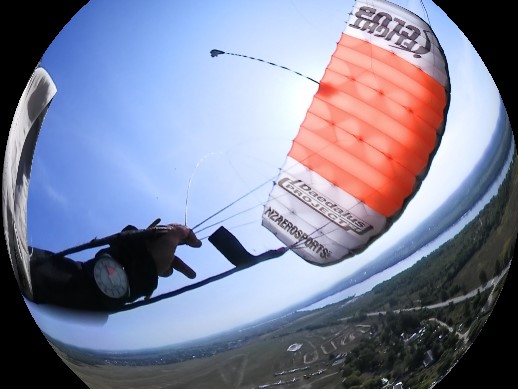

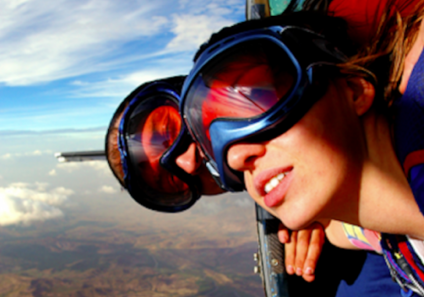
| HOURS PER WEEK |
| > 00 HOURS TO </= 10 HOURS |
| > 10 HOURS TO </= 20 HOURS |
| > 20 HOURS TO </= 30 HOURS |
| > 30 HOURS TO </= 40 HOURS |
| > 40 HOURS TO </= 50 HOURS |
| > 50 HOURS TO </= 60 HOURS |
| > 60 HOURS |
| FEE IN EUR |
| 320.00 |
| 640.00 |
| 960.00 |
| 1,200.00 |
| 1,440.00 |
| 1,680.00 |
| 1,900.00 |


SKYDIVER MENTORING.
THE 3RD LEVEL OF COMMITMENT ON THE STUDENT-COACH ENGAGEMENT SCALE.
Mentoring by nature requires you and your coach/ mentor to share a considerable amount of time with each other while heading down a common path.
In order for you guys getting to the end of that road together, a whole lot of sharing, understanding and supporting will have to be done along the way. It will take determination, discipline, endurance and trust at every corner and at every intersection along the way.
Therefore, a student-mentor relationship plays out on the 3rd and highest level of commitment on the student-coach engagement scale and will last at least one, typically several seasons.
SKYDIVE TRAINING AT THE FLIGHT CLUB SKYDIVING SCHOOL IN RUSSIA.
SKYDIVE COACHING, LOAD-ORGANIZING, SKYDIVER MENTORING
This page contains detailed information intended for licensed skydivers seeking professional assistance in the further development of their current level of proficiency in formation skydiving, free-flying and canopy piloting. If you are not yet a licensed skydiver, please visit the FLIGHT CLUB SKYDIVING SCHOOL home page to choose a skydiving course suitable for your current experience level.
The Flight Club skydiving school, located in the heart of the aviation super-center Aerograd Kolomna near Moscow city, employs various strategies to effectively facilitate skills development in sport- and military skydivers, with each of these strategies requiring a different level of personal commitment and engagement by the skydive student and the coach alike: load-organizing, skydive coaching and skydiver mentoring.
Following, we will take you onto a brief excursion into the history of skydive coaching, share our coaching philosophy with you and provide detailed in-depth information regarding skydive coaching, load-organizing and skydiver mentoring programs at the Flight Club skydiving school, associated tuition fees and booking procedures:
THE HISTORY OF PROFESSIONAL SKYDIVE COACHING.
During earlier days of skydiving, knowledge was typically passed on from individual to individual in what might best be described as friends sharing experience, knowledge and their personal approach to mastering certain skills sets with each other on a random case-by-case basis. Those really, really lucky might have found a seasoned skydiving buddy to consistently provide them with expert advice over a prolonged period of time, in a role-model style approach, or personal mentoring format.
During the mid-1980s and early 1990s, with the large-scale rise of turbine aircraft and the associated hike in ticket prices, came a need to find a more time-efficient and therefore more cost-efficient approach to learning. Professional competition teams everywhere were scrambling to pimp out their continuity- and training plans and were looking for ways to expedite the individual participants' personal skills development process.
What was needed to achieve all that, was a well-structured simple to complex free-fall skydiving and canopy piloting skills progression grid, an improved understanding of the individual skydiver's learning process and professional-grade coaches with expert level teaching proficiency and in-air abilities.
In short, the professional top-end of the sport had realized that we needed a legitimate approach to coaching in sport skydiving.
The skydiving world got exactly all of that with the release of the "Basic Body Flight Coaches Program" in the early 1990s. With it, skydive coaching was first legitimized as a professional activity.
With no shortage of skilled flyers around, the notion that all the sudden one needed a structured concept as well as a professional education as a teacher in order to show a rookie how to push some air around, in an eerie similarity to today, did not immediately find a lot of approval amongst intermediate level skydiving gods. The idea alone almost caused a revolution.
But, as it goes in any sport, results are what counts and ultimately, in a top-to-bottom trickle-down effect, news of the overwhelming success of the new coaching concept soon spread like a wild-fire throughout the world skydiving scene. And thus, professional skydive coaching found its wide-stance, permanent footing in the industry.
Credit is due where credit belongs and it is safe to say that none of this would have happened the way it did without the united efforts of legendary skydivers Robert Laidlaw, Craig Buxton, Danny Page and members of the original Arizona Airspeed team.
With the inception of Skydive University Inc. in DeLand and Sebastian, FL, USA, the culture of professional skydive coaching was disbursed into the world via satellite campuses in Arizona, California and New Jersey, through the distribution of quality educational material and through the company's international coach certification course program.
These original coaching programs have provided the very foundation for the International Bodyflight Association's (IBA) wind-tunnel instructor- and student training programs and have been incorporated, in some form or the other, into the student training syllabus and into the instructional rating hierarchy of the United States Parachute Association.
And that, is pretty much where we stand today.
OUR COACHING PHILOSOPHY AT THE FLIGHT CLUB SKYDIVING SCHOOL.
Flight Club founding members belong to the generation of skydivers that has eye-witnessed the rise of professional coaching in the sport. The success of their skydiving careers can be directly attributed to having been coached and mentored throughout most of their careers by Skydive University founding fathers and by their respective professional counterparts and partners at Skydive Arizona in Eloy.
And thus, until today, the focus at the Flight Club skydiving school lays squarely on our skydiving coaches and instructors applying professional-grade standards of teaching proficiency to the established skydiver skills development grid.
We facilitate a holistic teaching style in a "top down" format, meaning we teach from the latest high-performance models in all aspects of sport skydiving:
equipment knowledge, effective motor-skill development during the preparation phase, psychological aspects of the in-flight phase, correct execution of bio-mechanic principles and mental toughness in-air, increased situational awareness and sound decision making processes under canopy, systematic detailed skill analysis and SMART debriefing sequences.
Last but not least, we understand that the more fun you have during your training, the better your chances to ultimately apply all this. Accordingly, we facilitate your training on an eye-to-eye level and foster a training environment where mistakes are not only ok, but recognized as an integral part of the learning process.
Following, we explain in detail how all this is being applied to the three levels of the student-coach commitment and engagement scale:
load-organizing, skydive coaching and skydiver mentoring.
LOAD-ORGANIZING.
INTRODUCTION.
Skydivers of any experience level and in all disciplines of the sport, pretty much head out to the drop-zone with the same goals in mind:
They want to have fun, pick-up some new tricks in a safe learning environment and ultimately, feel welcome to and become a part of the resident skydiving community.
All this, can become somewhat tricky at times, especially for younger skydivers who don't really know anybody on the drop-zone and do not yet possess the in-air skills required to simply walk up to any group and sneak onto any random skydive.
Similarly, things do get tricky, when skydivers of varying experience levels are planning group skydives without adult supervision and/ or guidance. Typically, that ends up with the better flyers being off on their own trip and the rookies lost alone in space somewhere.
The glue, so to speak, successfully bonding all these variables into safe, fun and achievable skydive, is the load-organizer. An experienced veteran skydiver, the load-organizer learned to accurately read the situation on the field, realistically gauging each individual player's level of skydiving proficiency.
Load-organizers cater to different disciplines of the sport. At the Flight Club skydiving school, we organize formation skydiving- and free-fly jumps of all colors.
LOAD-ORGANIZING.
TUITION FEES.
The Flight Club skydiving school at Aerograd Kolomna fields experienced load-organizers who will play with you and your friends for:
EUR 15.00/ jump/ participant.
included: briefing, in-air and landing video footage, debriefing.
not included: jump tickets for you and the organizer. Cost for the organizer ticket will be shared among participants.
If you wish for a Flight Club load-organizer to travel to your home drop-zone, a EUR 250.00 guarantee/ day and a 5-day minimum booking requirement apply together with a surcharge to compensate for air-fare, transit and accommodation.
If you want to fly with a load-organizer, please feel free to visit us in person at the Flight Club skydiving school.
To reserve your personal slot prior to arrival at the drop-zone, to schedule a load-organizer exclusively for your group, or to request a Flight Club load-organizer to travel to your home drop-zone, please speak to us directly in FLIGHT CLUB LIVE CHAT.
LOAD-ORGANIZING.
THE 1ST LEVEL OF COMMITMENT ON THE STUDENT-COACH ENGAGEMENT SCALE.
It is the load-organizers job to assemble individual skydivers of compatible (not necessarily equal) skill level into groups and assist in engineering, that is, in designing and in planning a safe skydive.
The high art here is, to create a dive-plan which assigns interesting tasks to each individual participant, allowing for them to push their personal envelope a little bit and yet, this plan needs to stand a realistic chance of actually being successfully accomplished by all participants. After all, skydiving is only cool if it actually does work out according to plan every so often.
Following the jump, the load-organizer conducts a debrief in a fun and non-judgmental environment, pointing out positive elements of the dive and sharing some tips and tricks of the trade which allow for improvement in each participant the next time around.
Everybody is welcome to participate in a single jump only or in a series of skydives and, at the end of the day, it should have been a great day out with friends on the drop-zone.
In addition to picking up a new trick or two along the way and to playing an integral part in a group of successful skydivers, the added benefit so to speak, for skydivers frequently hanging around experienced load-organizers is
that naturally, they themselves become more and more efficient in successfully engineering their own skydives.
And thus, over time, the next generation of load-organizers in the sport will be born.
Load-organizing ranks as the first level of commitment on the student-coach engagement scale as, by nature, only a short-term commitment (jump-by-jump basis) is required from either side.
SKYDIVE COACHING.
INTRODUCTION.
Flight Club skydiving coaches engage skydiving students of various levels of proficiency (ranging from novice to advanced) with the goal to help them master individual skills sets, or to guide them through entire stages of the skydiver skills-development progression-grid.
Flight Club skydive coaches work exclusively in a one-on-one environment.
SKYDIVE COACHING.
THE SKILLS-DEVELOPMENT PROGRESSION-GRID.
Every skydiver has a dream of what they want to be able to do some day. In order to actually get there though, the trick is to first come up with a road map guiding you through a series of specific, measurable, achievable, relevant and trackable way-points.
In skydiving lingo, we call this road map the "skills- development progression-grid".
Following, we will take an in-depth and detailed look at both, the skydiver's free-fall- and canopy-piloting skills- development progression-grid:
KEY CONSIDERATIONS
PERTINENT TO:
1. THE SEQUENCE OF
(a) FLIGHT-ATTITUDE STAGES,
(b) SKILL-SET MODULES,
(c) EXIT & FLY-AWAY SCENARIOS;
2. QUANTITATIVE & QUALITATIVE CRITERIA OF YOUR TRAINING.
The sequence of flight-attitude stages, skill-set modules and exit scenarios is based upon the logic of following a simple-to-complex progression in the development of motor-skills, inner balance and spatial awareness.
These abilities, when mastered to an autonomous degree of technical perfection as it pertains to each respective exit scenario, skill-set module and flight-attitude stage, serve as the very foundation upon which the next (and more difficult to handle) flight-attitude stage, skill-set module and exit scenario is being built upon.
Thus, and in reverse logic, settling for less repetition in your training than is actually required to perform each exit scenario, skill-set module and flight-attitude stage to an autonomous degree of technical perfection,
skipping and/ or combining the training of any exit scenario, skill-set module and flight-stage,
and/ or randomly reshaping the sequence of exit scenarios, skill-set modules and flight-attitude stages,
ultimately makes this foundation less solid and therefore:
(a) increases the chances of a skydiver biting his or her teeth out when trying to learn the follow-up trick, which in turn
(b) might set-off a negative change in the trajectory of the learner's personal success-confidence-success cycle.
The stand-alone exception to the golden rule of not skipping ahead through flight-attitude stages, is angle-flying which, at least in an introductory form, can to some extent be incorporated into training jumps of other flight-attitude stages through the inclusion of associated post-exit fly-away drills and altitude-adjusted break-off scenarios.
SKYDIVE COACHING.
THE CANOPY-PILOTING SKILLS-DEVELOPMENT PROGRESSION-GRID.
At the Flight Club skydiving school, we do not host specialty event canopy- piloting camps in a reduced altitude environment (other than the canopy-piloting mini-course required as part of the USPA B-license qualification).
We embrace a holistic approach towards skydiving and to us, canopy-piloting is what it is: half the sport.
Accordingly, it gets its fair share of attention from us. All students are being assigned a specific task (or a series of specific tasks) for canopy-piloting practice following each and every free-fall training jump with a Flight Club coach.
THE CANOPY-PILOTING SKILLS-DEVELOPMENT PROGRESSION-GRID.
TRAINING IN SKILL-SET MODULES.
A STEP-BY-STEP GUIDE TO BECOMING A SAFE AND PROFICIENT PILOT.
In a similar approach to flight-attitude stages and subordinate flight-skills modules as part of the free-fall skills development progression-grid,
a skydiver is well advised to stick to a well thought-out simple-to-complex sequence of events when practicing canopy-piloting skills.
This sequence of events is broken down into three core canopy-piloting skills-development modules,
with each of these three skill-set modules being taught over a series of skydives:
STUDENT SKILL ASSESSMENT
AND TRAINING PLAN DEVELOPMENT.
We do understand the fact that everybody wants to learn to fly head-down right here, right now and to go angle-flying with their buddies tonight on the sunset load.
We do appreciate the ambition. Everything starts with a dream after all. What we do not appreciate though, to be perfectly honest, is the "right here, right now" and the "tonight" portion of this so common introductory statement.
At the Flight Club skydiving school, we have been coaching for a living for the better part of 25 years or so and have literally skydived with thousands of people in the process. Obviously, since we get paid to get you to where you want to go, we do want for you to get there asap. What we need from your side to make this happen, is trust. Trust in the fact, that we do indeed know exactly what it actually takes to make that asap criteria happen. If you work with us and follow our lead, we can pretty much guarantee, that you will walk out with a smile and a feeling of accomplishment when it's all said and done.
What we kind of do not want, is to settle for an un-realistic time parameter in your goal setting and as a result, have to watch you run your head into the wall trying to learn something that you have no chance of accomplishing. Not because there is something wrong with you, simply due to the fact that you lack the foundation to actually pull that particular trick at that particular point in time.
Accordingly, we do insist, despite all flexibility and openness to custom-tailor your training towards your personal need, that you demonstrate what you bring to the game in an introductory skill assessment jump.
We will design a custom training plan with you together after this initial skydive and take it from there one thing at a time. Cool? Sweet as.
Just in case you have been wondering by the way, the answer is "YES" ...... of course, a similar step-by-step skills development strategy is applicable for all canopy pilots hiring us with the urgent request: "please teach me how to swoop" ;)
Just because, you know, it might actually take us a wee while before you will be doing this kind of thing consistently:
SKYDIVE COACHING.
TUITION FEES.
The Flight Club skydiving school in Russia fields some world-class free-fall skydiving and canopy-piloting coaches who will work with you in a one-on-one format starting at
EUR 320.00/ day.
including: 8 jump/ day minimum, tuition fees, in-air and landing video footage. Should you get weathered out before jump 8 of the day, we will waive the daily fee and bill you EUR 40.00 per jump instead. If you book 6 days in a row, day 7 will be on the house.
not included: jump tickets for you and your coach. Equipment rental in case you do not own a rig.
If you wish for a Flight Club free-fall skydive coach or a canopy piloting coach to travel to your home drop-zone, a EUR 320.00 guarantee/ day and a 5-day minimum booking requirement apply together with a surcharge to compensate for air-fare, transit and accommodation.
SKYDIVE COACHING.
BOOKING PROCEDURES.
The Flight Club skydiving school in Russia offers personal skydive coaching 7 days a week, starting from mid-April through mid-October.
To keep it fair for everybody, we accommodate walk-in customers on a first-come first-serve basis. To schedule a personal coach and enjoy priority service during daily operations, please SEND US A BOOKING REQUEST before your arrival at the drop-zone.
If need the help of a personal coach to qualify for a higher ranking USPA license, please check out our USPA SKYDIVING LICENSES tutorial for a step-by-step training guide.
To discuss your personal situation, feel free to speak to us directly in FLIGHT CLUB LIVE CHAT.
Did you know that we have a GIFT CARD for 1 week of exclusive 1:1 coaching at a drop-zone of your choice?
THINKING OF A PROFESSIONAL CAREER IN THE SPORT?
If you are an experienced skydiver with a high level of in-air proficiency and considering a professional career as a skydiving coach or instructor, then this might be for you:
The Flight Club skydiving school hosts upon request a variety of SKYDIVE INSTRUCTOR RATING courses which can help you qualify for USPA Coach- and USPA AFF instructor ratings and UPT endorsed Vector/ Sigma tandem instructor ratings.
SKYDIVER MENTORING.
INTRODUCTION.
The Flight Club skydiving school offers mentoring for all those amongst you, who have a skydiving dream and need a little help to make that all happen.
Teaching skydive students is obviously not the only way to make money in the sport. There are plenty of other opportunities for a professional career in the world-wide skydiving industry.
You can work as a pilot, mechanic, drop-zone operator, in marketing, in all kind of associated manufacturing sectors, as a rigger, as a canopy test-pilot, in the military sector, in the IT sector, in photo- and video production and post-production etc. etc.
For all those amongst you, out there on a skydiving mission of some sort and looking for professional support and guidance along the way to make things happen, this might be for you!
Check out the Flight Club skydive mentoring program right here:
THE MENTORING PROCESS.
SHARING THE DREAM AND SHARING THE JOURNEY.
Once we have an idea where the journey goes, we can navigate you towards that goal by:
laying out a roadmap of how to get to where you want to go,
helping you understand what it will take along the way,
organizing the things we need and you don't have,
showing you a role-model approach,
sharing our experience and know-how,
teaching you the tricks of the trade,
spotting you before you make a false move,
motivating you when the going gets tough,
setting you up with the right people,
shielding you from bad influence,
managing your surroundings so you can focus on the trip,
supporting you when you need it most,
guiding you from waypoint to waypoint towards the finish line.
Thanks to our experience, know-how and a professional- and social network spanning across the entire planet, Flight Club has been able to help heaps of fellow skydivers move forward and find a solid footing in the industry over the years. You too, can be one of them.
Every 10,000-mile journey starts with one initial step. Contact us.
SKYDIVER MENTORING FEES.
Flight Club charges a variable per week fee based upon the total # of hours your project engages our representative during each respective calendar week.
The total # of hours we spend working on your project every week may vary as per your need.
You can choose freely from one calendar week to the next calendar week for how many hours you want us to engage. Accordingly, we invoice you separately for each week.
A non-refundable down-payment in the amount of EUR 1,200.00 is obligatory in order for us to enter into any kind of mentoring agreement. This amount will be forward credited to your account.
SKYDIVER MENTORING.
CONTACT US.
Discuss your project in FLIGHT CLUB LIVE CHAT and let us know how you believe we might be able to be of assistance.
Alternatively, you can DROP US AN INQUIRY and we'll be sure to get back to you in no time.
SITE LINKS
SKYDIVE COACHING.
THE 2ND LEVEL OF COMMITMENT ON THE STUDENT-COACH ENGAGEMENT SCALE.
Flight Club skydive coaching programs are available for formation skydiving, free-flying and canopy piloting.
These skydive coaching programs will keep you engaged for a series of skydives, require a good amount of focus and dedication and last anywhere from a day to a week.
Thus, skydive coaching ranks as the 2nd level of commitment on the student-coach engagement scale.
THE FREE-FALL SKILLS-DEVELOPMENT PROGRESSION-GRID.
FLIGHT-ATTITUDE TRAINING-SEQUENCE IN STAGES.
This grid suggests that, on the grand scale of things, a skydiver has to master 5 different flight-attitudes, in order from the most simple to the most complex, to become a truly versatile and skillful flyer.
STAGE 1: BELLY-FLYING.
become proficient in controlling this naturally- and laterally stable flight-attitude in a low vertical speed environment involving standard/ familiar visual references.
STAGE 2: BACK-FLYING.
progress to a naturally- and laterally stable flight-attitude in a low vertical speed environment involving inverted visual references.
STAGE 3: SIT-FLYING.
handle naturally- and laterally less stable flight-attitudes in a mid-range vertical speed environment involving standard visual references.
STAGE 4: STAND-UP-FLYING.
apply your new-found balance to associated high vertical speed variations involving standard visual references.
STAGE 5: HEAD-DOWN-FLYING & ANGLE-FLYING.
master advanced flight-attitudes requiring a heightened sense of spatial awareness in a high vertical speed environment involving both standard- and inverted visual references.
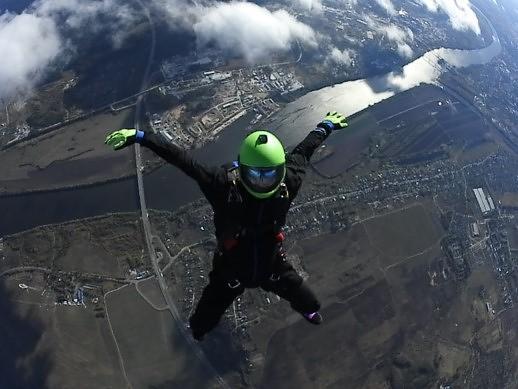
SKILL-SET MODULE 1.
CANOPY-PILOTING FUNDAMENTALS.
deployment sequence:
body position considerations
heading awareness
traffic and the line-of-flight
post deployment drill:
getting ready to fly
situational awareness traffic
position and target identification, glide angle perception
canopy-piloting:
brake line check
2-stage flare technique practice
toggle use glide-angle manipulation
toggle turns
understanding the post turn recovery curve
negative turns in various brake settings
toggle stall and recovery
holding area and pattern selection
vertical stacking in the holding area
flying a classic pattern
1/4 brake glide-angle perception in the landing pattern
improved accuracy considerations
landing:
PLF position
2-sstage flare applied
priorities in sequence
situational awareness in the landing area
SKILL-SET MODULE 2
PROGRESSIVE CANOPY-PILOTING TECHNIQUES.
deployment sequence:
rear riser heading control
post deployment drill:
awareness glide angle perception
alternate landing areas/ obstacles
canopy-piloting:
rear riser use glide-angle manipulation
rear riser turns
negative rear riser turns
rear riser stall and recovery
rear riser flare technique
perfecting your game in the holding area
identifying adverse conditions and traffic
pattern entry timing
adjusted patterns
landing:
rear riser flare (using appropriately sized parachutes)
SKILL-SET MODULE 3.
ADVANCED CANOPY-PILOTING TECHNIQUES.
deployment sequence:
weight distribution
post deployment drill:
alternate line-twist remedy technique
canopy-piloting:
front riser use glide-angle manipulation
rear riser turns
negative front riser turns
understanding the input over time relationship
double front 3 sec. altitude loss ID
3 sec./ 90 degree front riser turn altitude loss ID
heightened spatial awareness and 3D traffic identification
low turn emergency bailout procedure
recovery curve after 3 sec double front riser dive
double front riser to double rear riser transition
landing:
crosswind landings maintaining a heading
crosswind landings manipulating a heading
workshops:
wing-loading chart
canopy selection criteria
down-sizing performance pre-requisite criteria
equipment configuration and accessories selection
malfunction scenarios and response training
airspace considerations applicable to high-speed traffic
FLIGHT-ATTTITUDE TRAINING.
SUBORDINATE FLIGHT-SKILL TRAINING MODULES.
On a smaller and subordinate scale, the skills-development progression-grid we discussed above, further brakes down into a core sequence of 5+1 basic flight-skill sets which in turn, is being taught within each stage of the flight-attitude training sequence.
These 5+1 basic flight-skill sets are grouped into "modules".
Modules are successive and again based upon a simple-to-complex progression in the development of relevant motor-skills, inner balance and spatial awareness. Each module is being taught over a series of several training jumps.
FLIGHT-SKILL MODULE 1: PROXIMITY CONTROL.
Working at a constant vertical speed and proximity relative to a static target, learn to identify a biomechanically- and aerodynamically neutral body-position. Pick up and release grips in proximity to a static base. Move forward and backwards applying the start-coast-stop principle.
FLIGHT-SKILL MODULE 2: FALL-RATE CONTROL.
Learn to adjust your vertical speed applying the start-coast-stop principle while controlling proximity relative to a static target.
FLIGHT-SKILL MODULE 3: CENTER-TURNS.
Master 90, 180 and 360 degree center-turns applying the start-coast-stop principle, while maintaining proximity and a vertical speed which is equal to the vertical speed of a static target.
FLIGHT-SKILL MODULE 4: SIDE-WAYS MOTION.
Master side-ways motion applying the start-coast-stop principle, maintaining an equal angle, rate-of-fall and proximity relative to both a static target and a target moving in sync with you.
FLIGHT-SKILL MODULE 5: SUPERPOSITIONING.
Master the art of super-positioning: combining either any two lateral transitions or any one lateral transition with a rotational move, applying the start-coast-stop principle while maintaining proximity and a vertical speed which is equal to both, static targets and targets moving in sync with you. Identify key targeting inter-pictures on the fly.
FLIGHT-SKILL MODULE 6: TRANSITIONS.
Learn to transition from a biomechanically- and aerodynamically neutral body-position as it is pertinent to your current flight-attitude stage to a biomechanically- and aerodynamically neutral body-position as it pertains to the next in sequence flight-attitude stage, maintaining a constant vertical speed and proximity relative to a static target.
From here, the show goes on with a brand-new 5+1 flight-skill set sequence applied to the flight-attitude stage you have transitioned to.
EXIT PROGRESSION & FLY-AWAY SCENARIOS.
Of course, every skydive starts latest with the exit and, as we all know, to keep everybody together during the first couple of seconds out the door is kind of a pre-requisite for any successful skydive.
Accordingly, there is an exit progression incorporated into the above 5+1 skill-set module series as well.
Over the course of events, you'll learn all relevant exit variants starting with rear-float, center-float- and front-float exits, that is including the associated uphill fly-away scenarios, before progressing to dive-exits and the associated down-hill flyaway tricks.
THE GOAL-SETTING PROCESS.
In order for us to be able to help, we do need to understand what exactly it is you wish to accomplish.
Do you want to become a skydive instructor, compete at the world-championship, get an aviation business off the ground, run a drop-zone, need networking assistance in the industry, or do you simply watt to be the best you can personally be in any particular area of the sport?
CURRENT MISSION PARAMETERS AND PLANNING.
In the same token, we need to understand where you and where your project stand right now:
is the ball rolling already or are we dealing with a start-up, what do you bring to the game in terms of relevant experience, skill, know-how, cash, equipment, time and man-power?
Once we do have a clear picture of the prevailing circumstances, we can start working on a battle plan together.
Let us know. Chances are, we have somebody in Flight Club, who has been there and done that and thus, knows exactly what to do.
EXPEDITE YOUR MOTOR-SKILLS DEVELOPMENT WITH SUPPLEMENTAL FREE-FALL SIMULATOR TRAINING.
For skydiving students wishing to expedite their motor-skills development with supplemental free-fall simulator training, the Flight Club skydiving school offers tunnel coaching in any of the Moscow region wind tunnels to preferential rates.
To learn more, please visit our WIND-TUNNEL FLYING tutorial.

